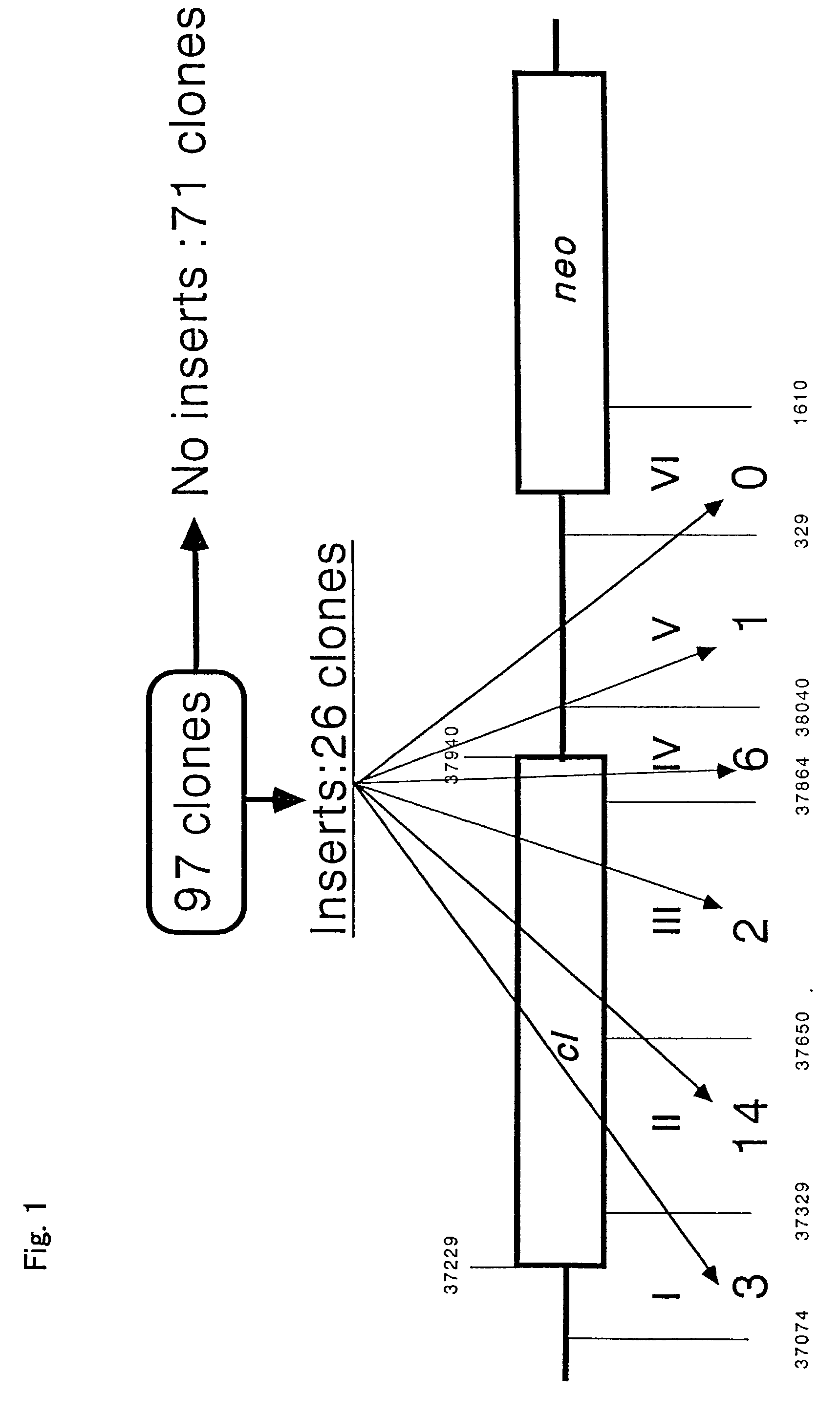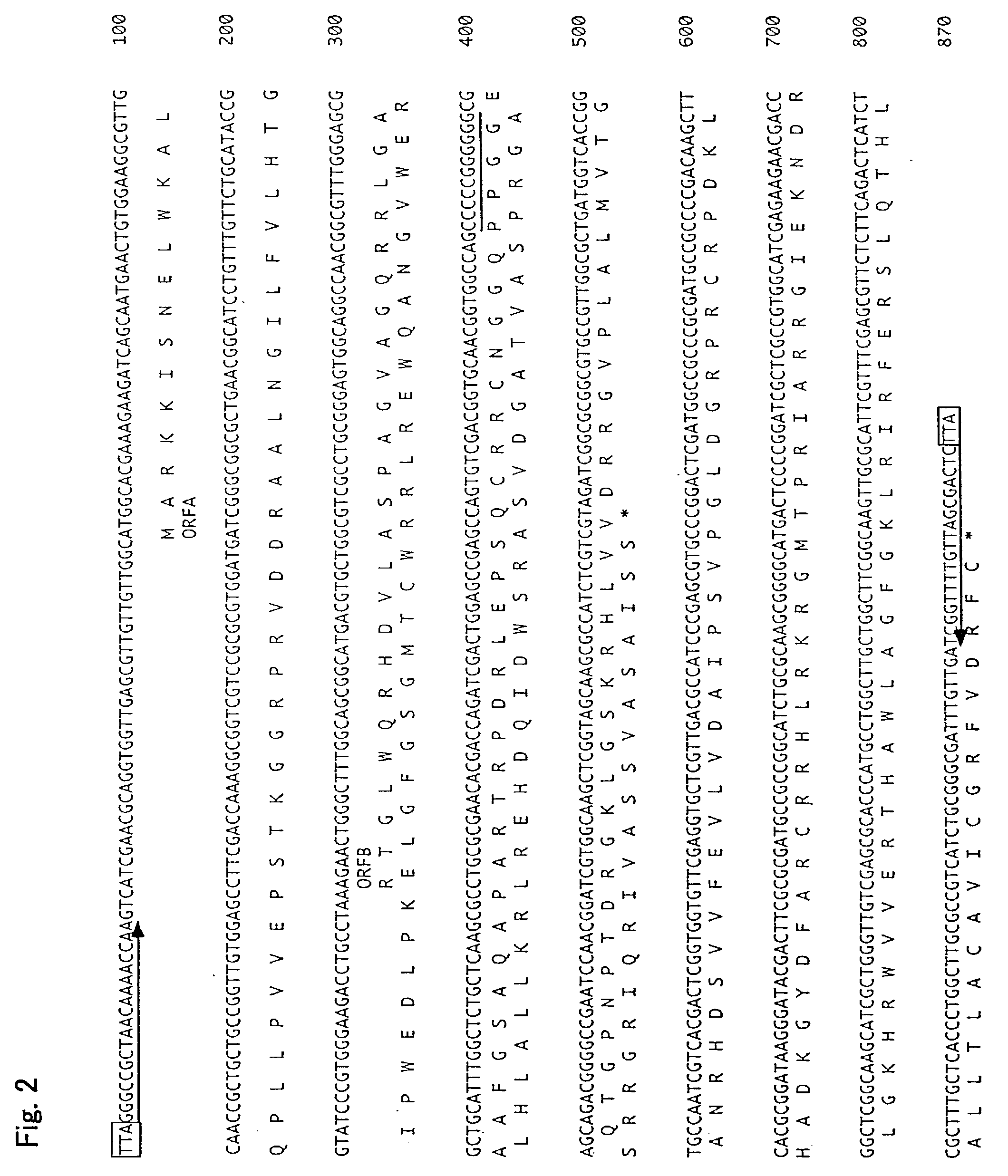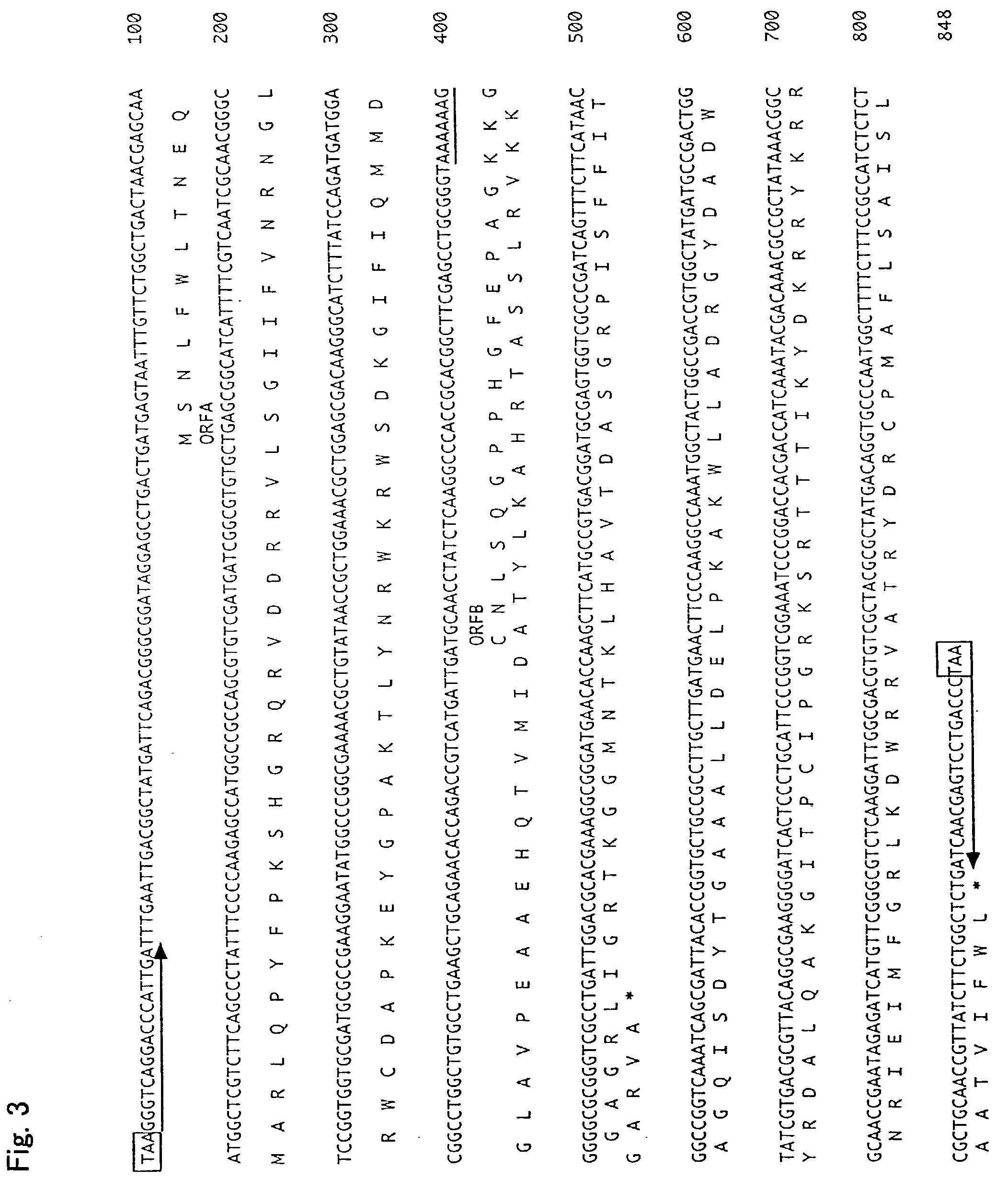Insertion sequence element derived from ralstonia solanacearum
a technology of ralstonia solanaceae and insertion sequence, which is applied in the direction of transferases, bacteria peptides, peptide sources, etc., can solve the problems of difficult positive isolation and insufficient research on the isolation of other is elements
- Summary
- Abstract
- Description
- Claims
- Application Information
AI Technical Summary
Benefits of technology
Problems solved by technology
Method used
Image
Examples
example 1
[0054] Search for a transposable element of a Ralstonia solanacearum strain MAFF301556 (hereinafter, referred to simply as "strain MAFF301556") was performed. To search the transposable element, a transposon trap vector is required, and in the present invention, pSHI1063 was used.
[0055] First, the strain MAFF301556 was grown on PTYG agar medium (0.25 g of bactopeptone, 0.25 g of bactotryptone, 0.5 g of bacto-yeast extract, 0.5 g of glucose, 30 mM of MgSO.sub.4.7H.sub.2O, 3.5 mg of CaCl.sub.2.2H.sub.2O, and 15 g of agar powder in 1000 ml of distilled water) at 28.degree. C. The grown colony was inoculated into a 5 ml of a PTYG liquid medium and was cultured with shaking at 28.degree. C. for 2 days.
[0056] Competent cells were made from this culture solution. Four ml of the culture solution were added to 200 ml of the PTYG medium, and cultivation was performed with shaking at 28.degree. C. until the OD.sub.500 reaches about 0.2. After cultivation, the culture solution was placed in ice...
PUM
 Login to View More
Login to View More Abstract
Description
Claims
Application Information
 Login to View More
Login to View More - R&D
- Intellectual Property
- Life Sciences
- Materials
- Tech Scout
- Unparalleled Data Quality
- Higher Quality Content
- 60% Fewer Hallucinations
Browse by: Latest US Patents, China's latest patents, Technical Efficacy Thesaurus, Application Domain, Technology Topic, Popular Technical Reports.
© 2025 PatSnap. All rights reserved.Legal|Privacy policy|Modern Slavery Act Transparency Statement|Sitemap|About US| Contact US: help@patsnap.com



